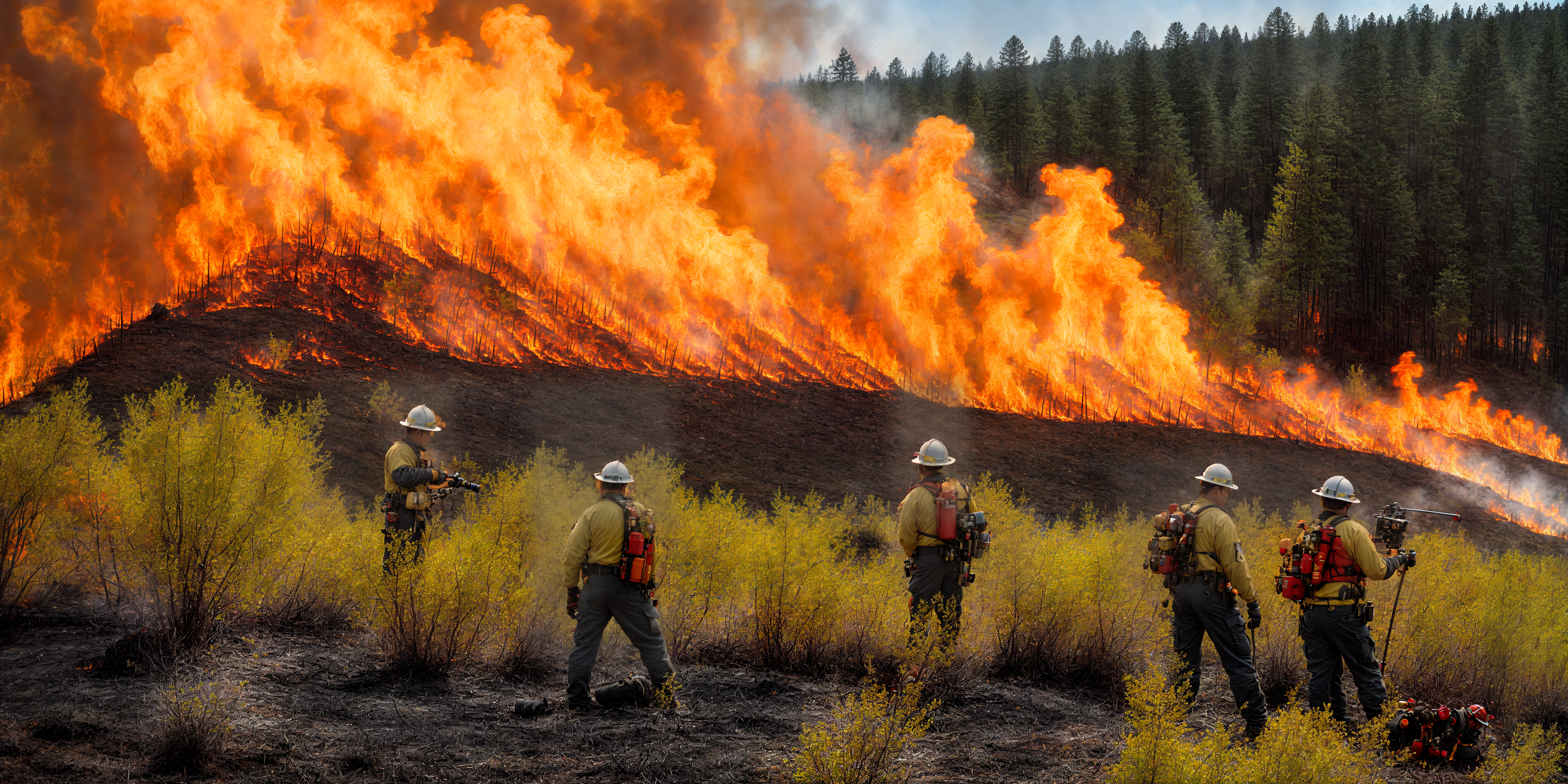The bill sets forth multiple provisions aimed at bolstering the nation’s wildfire resilience. Key measures include:
1. **Financial Support and Flexibility:** The bill grants the Secretaries of Agriculture and the Interior, along with the FEMA Administrator, the authority to waive or reduce matching fund requirements for states, local governments, and tribal entities engaged in wildfire mitigation, management, and recovery projects. This flexibility aims to ease the financial burden on communities investing in wildfire preparedness and recovery.
2. **Wood Processing Inventory and Infrastructure:** To optimize the use of biomass—woody material that can fuel fires—the act mandates a comprehensive inventory of existing wood processing facilities, such as sawmills and biomass utilization plants. The bill encourages the development of additional facilities in fire-prone regions lacking such infrastructure. This initiative not only addresses fire risks but also promotes economic opportunities in these areas.
3. **Land Authorization and Small Business Support:** The EMBER Act proposes a program allowing federal lands to be used for establishing new wood processing facilities where needed. Additionally, the bill provides cost-share agreements and technical support to small businesses utilizing biomass as a byproduct of wildfire reduction activities.
4. **Renewable Fuel Standard Program:** The Environmental Protection Agency (EPA) is tasked with incorporating biomass-derived fuels from fire risk reduction activities into the Renewable Fuel Program, potentially fostering a new market for sustainable biofuels.
5. **Grazing Management:** Recognizing that grazing can reduce fire risk, the bill promotes targeted grazing on federal lands, aligning with ecological conditions and wildfire impact reduction objectives. This includes nonrenewable grazing permits and innovative technologies like remote sensing and virtual fencing.
6. **Workforce and Training:** The legislation calls for a detailed workforce needs report to identify gaps in federal wildfire management capabilities and improve partnerships with state, tribal, and local authorities. Furthermore, the bill mandates expanded training for local fire entities to better prepare them for wildfire response and prescribed fire practices.
7. **Post-Wildfire Recovery Policies:** The bill seeks to streamline recovery efforts by mandating the development of coordinated policies and guidance for the transitional phase between wildfire response and recovery. This includes updating criteria for federal recovery programs and ensuring quick and effective post-fire assistance, including maintaining drinking water infrastructure.
8. **Cross-Boundary Emergency Watershed Protection:** An amendment allows for emergency watershed protection measures spanning federal, state, and private lands, ensuring comprehensive and swift action to safeguard lives, property, and resources.
9. **Tribal Engagement and Support:** Significantly, the EMBER Act emphasizes the inclusion of tribal nations in wildfire management efforts. It proposes contracts, agreements, and grants to bolster tribal participation, as well as the establishment of a panel to explore further opportunities for tribal inclusion in federal wildfire strategies.
10. **Science and Technology Investments:** The President is mandated to set up a Wildfire Subcommittee under the National Science and Technology Council. This subcommittee will focus on directing funding toward research in effective wildfire mitigation and recovery, developing new fire models, and incorporating current and future climate conditions into fuel models.
11. **Categorical Exclusions and Environmental Analyses:** The bill mandates amendments to categorical exclusions for swift post-fire community environmental needs. It also requires expanded use of programmatic environmental reviews to cover large-scale, connected projects, ensuring comprehensive and efficient planning for fire-prone landscapes.
12. **Performance Metrics and Uniform Data:** The bill calls for updated performance metrics for land management agencies to include social, environmental, and cultural factors. Additionally, it emphasizes the development of uniform wildfire hazard datasets for consistent and informed decision-making.
The EMBER Act’s provisions address a critical national concern by offering robust solutions to fire-prone areas, reinforcing community resilience, and enhancing the nation’s approach to wildfire management. If passed, this comprehensive legislation promises significant support for local and tribal communities, improved management practices, and renewed attention to the economic and environmental aspects associated with wildfires.
Currently, the bill has been referred to the Committee on Agriculture, Nutrition, and Forestry for further consideration. Should it successfully pass through the Senate, House of Representatives, and receive executive approval, the EMBER Act could mark a transformative shift in American wildfire policy, potentially mitigating fire risks and fostering recovery across the nation.
In conclusion, the EMBER Act represents a holistic approach to address the wildfire challenges facing the United States, blending financial support, infrastructure development, scientifically informed management practices, and local and tribal empowerment. Whether this act will successfully navigate the legislative process remains to be seen, but its comprehensive strategy offers hope for a more resilient future in the face of increasing wildfire threats.



























































































